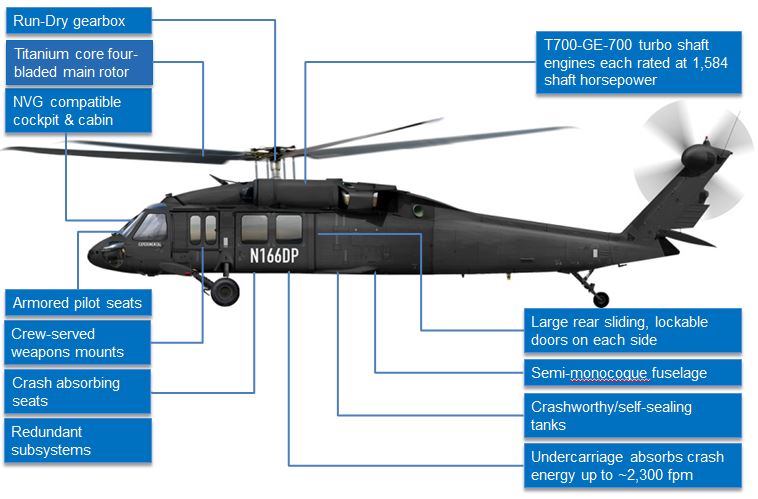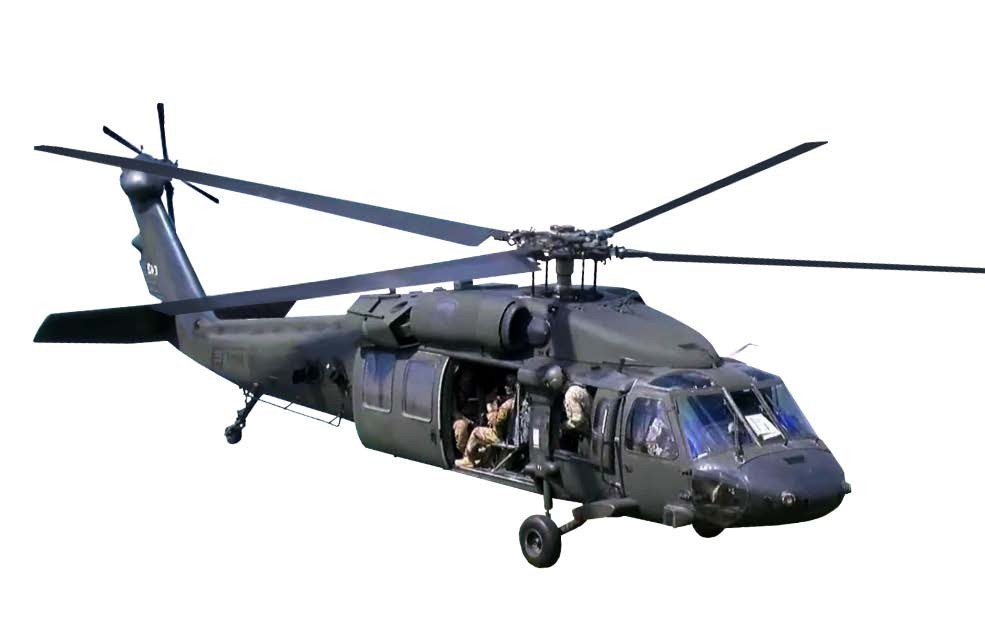Exactly how the UH 60's Flexibility Supports Both Battle and Altruist Initiatives
Exactly how the UH 60's Flexibility Supports Both Battle and Altruist Initiatives
Blog Article
UH-60: Technologies in Modern Helicopter Layout
The UH-60 helicopter stands as a benchmark in modern aviation, showcasing considerable improvements in layout and technology that provide to the developing needs of army operations. As we check out the development and vital developments of the UH-60, it comes to be vital to think about exactly how these advancements influence not just present applications but additionally the future landscape of helicopter layout.

Evolution of the UH-60
The advancement of the UH-60 Black Hawk helicopter represents a considerable turning point in aerospace design and military air travel. Introduced in the late 1970s, the UH-60 was created by Sikorsky Aircraft to fulfill the United States Military's demand for a versatile energy helicopter qualified of carrying out a selection of goals. Its style stressed longevity, rate, and ability to move, setting brand-new requirements for operational performance.
The UH-60 includes a distinctive four-blade blades system, which enhances lift and security, enabling it to operate successfully in varied environments. Its airframe is created from innovative composite materials, adding to a decrease in weight while keeping structural stability. The helicopter's style likewise incorporates enhanced the rules of aerodynamics, which enhances gas efficiency and raises range.
Throughout the years, the Black Hawk has actually undertaken several upgrades to enhance its abilities, including improved engines, progressed flight control systems, and modular systems for easy upkeep and adaptability. The helicopter's capability to do objectives varying from troop transportation to medical emptying has actually strengthened its role as a foundation of U.S. armed forces procedures. The UH-60 Black Hawk continues to be an archetype of exactly how development in helicopter style can considerably affect armed forces efficiency and operational versatility.
Advanced Avionics Systems
Developments in avionics systems have changed the capabilities of modern helicopters like the UH-60 Black Hawk, enhancing functional efficiency and situational recognition (UH 60). The integration of advanced avionics allows for improved trip, communication, and navigation administration, making the UH-60 much more flexible in diverse goal accounts
Among the key attributes is the advanced digital cockpit, which employs multifunction display screens that offer real-time information, making certain pilots have immediate accessibility to crucial trip information. This streamlining of info lessens pilot workload and improves decision-making processes during complicated procedures. Furthermore, the incorporation of general practitioner and inertial navigation systems makes it possible for specific positioning and route planning, enhancing goal execution in difficult atmospheres.
Furthermore, progressed avionics systems improve interaction capabilities through secure data links and voice communication systems, permitting seamless sychronisation with ground pressures and other aircraft. The combination of automated flight control systems further contributes to improved security and control, specifically in damaging weather or throughout low-altitude maneuvers.
Engine and Performance Enhancements
Engine efficiency in modern-day helicopters has taken a substantial jump ahead, driven by advancements that improve performance, dependability, and power. At the forefront of these improvements is the adoption of even more effective turboshaft engines, particularly those using advanced materials and innovations that make find more it possible for higher temperature level tolerances and raised drive capabilities. The UH-60 Black Hawk, as an example, utilizes the T700-GE-701C engine, which includes a dual-channel, full-authority electronic engine control system. This system enhances performance while enhancing fuel consumption and lowering upkeep needs.
Moreover, the integration of engine health and wellness tracking systems enables real-time diagnostics and anticipating upkeep, substantially improving functional integrity. These systems not only sharp staffs to prospective issues prior to they come to be critical however also promote more reliable maintenance organizing, consequently reducing downtime.

Materials and Structural Innovations
Recent developments in materials and architectural design have actually transformed modern-day helicopter construction, boosting both performance and resilience. The intro of innovative composite products, such as carbon fiber enhanced polymers, has actually dramatically minimized weight while preserving architectural integrity. This shift not just improves gas efficiency but likewise enhances haul capacity, allowing helicopters like the UH-60 to carry out more diverse missions.
Furthermore, innovations in light weight aluminum alloys and titanium parts have actually contributed to improved resistance to corrosion and tiredness, prolonging the lifespan of vital airframe aspects. The strategic use these materials has caused a decrease in maintenance demands and enhanced overall operational readiness.

Moreover, the combination of computer-aided layout (CAD) and additive manufacturing innovations has made it possible for a lot more complex geometries and light-weight frameworks, maximizing the aerodynamic performance of helicopter styles. These developments help with quick prototyping and production, allowing manufacturers to click for info respond quickly to advancing goal demands.
Safety And Security and Survivability Attributes
Security and survivability attributes in modern helicopter design have come to be extremely important, mirroring the increasing demands for mission performance in tough atmospheres. The UH-60 Black Hawk, a significant instance, incorporates sophisticated innovations to improve team and guest defense. Among one of the most vital innovations is the unification of crashworthy fuel systems designed to lessen the risk of fire during influence. Additionally, the airframe is constructed with enhanced materials that take in and dissipate energy, additional protecting passengers in case of a collision.
The helicopter likewise uses a ballistic security system, which consists of armored crew seats and vital systems protecting, reducing susceptability to small arms fire and shrapnel. Improved situational understanding is achieved through innovative avionics and sensing unit technologies, allowing pilots to spot and avoid hazards successfully.
Furthermore, the combination of redundancy in important systems-- such as twin engines and numerous trip control channels-- ensures continued procedure also if one system falls short. The UH-60 is equipped with sophisticated emergency flotation devices, boosting survivability in water landings. Collectively, these features not only boost the security of employees yet also enhance objective success rates in aggressive settings, demonstrating the commitment to quality in helicopter layout.
Verdict
The UH-60 helicopter represents a substantial development in contemporary aeronautics technology, integrating cutting-edge materials, cutting-edge avionics, and durable safety attributes. Generally, the UH-60 serves as a standard for future developments in helicopter style, symbolizing strength and versatility in contemporary military procedures.
The UH-60 helicopter stands as a benchmark in modern air travel, showcasing substantial developments in design and technology that cater to the advancing demands of army procedures. As we explore the evolution and key developments of the UH-60, it becomes necessary to think about how these growths influence not only existing applications however also the future landscape of helicopter layout.
Introduced in the late 1970s, the UH-60 was made by Sikorsky Aircraft to meet the United States Army's demand for a versatile energy helicopter capable of executing a selection of objectives. The UH-60 Black Hawk remains a prime instance of just how development in helicopter style can significantly impact army effectiveness and operational adaptability.
In general, the UH-60 offers go now as a standard for future growths in helicopter design, symbolizing durability and flexibility in contemporary army operations.
Report this page